Uganda
Uganda, in long form the Republic of Uganda or the Republic of Uganda, in English Uganda and Republic of Uganda, in Swahili Uganda and Jamhuri ya Uganda, is a country in East Africa. It is also considered to be part of the Africa of the Great Lakes. It is surrounded by the Democratic Republic of the Congo to the west, Kenya to the east, Rwanda to the southwest, South Sudan to the north and Tanzania to the south. The south of the country includes a large part of Lake Victoria. Uganda takes its name from the ancient kingdom of Buganda, which once covered the southernmost regions, including the capital and largest city, Kampala. Uganda is a member country of the Organization of Islamic Cooperation.
Uganda’s history
Pre-colonial period
The peoples of present-day Uganda were hunter-gatherers up to 700 to 300 BC. Populations of Bantu language and culture, probably from Central Africa, migrated to the south of the country, bringing with them the work of iron and new social and political organizations. In the fourteenth and fifteenth centuries, the Kitara Empire covered most of the Africa of the Great Lakes, between Lake Albert, Lake Tanganyika, Lake Victoria and Lake Kyoga. His government was based in what became the Ankole kingdom, in the hands of the Bachwezi dynasty, itself succeeding the semi-legendary Batembuzi dynasty. In the north and east of the country, Nilotic peoples engaged in animal husbandry and agriculture, including the Luo and Ateker, colonized the region in the early second century, which would have caused the fall of the Chwezi Empire. The twins Rukidi Mpuuga and Kato Kintu are said to have been the first Bunyoro and Buganda kings after the end of the Chwezi Empire and to have founded the Babitto and Bambejja dynasties. Certain Luos settled in the Bunyoro territories and assimilated there, founding the Babiito dynasty of the current Bunukoro-Kitara Omukama.
The migrations of the Luos lasted until the sixteenth century, to the east of Uganda as on the eastern shores of Lake Victoria, in the territories of present-day Kenya and Tanzania. The Ateker (Karimojong and Iteso) settled in the northeast and east of the country and some merged with the Luos north of Lake Kyoga. Beginning in the 1830s, Arab traders arrived inland from the coasts of East Africa. They were followed thirty years later by British explorers in search of the sources of the Nile. Protestant and then Catholic missionaries arrived in 1877 and 1879 respectively.
Colonial period
The United Kingdom placed the region under the authority of the British Imperial Company for East Africa in 1888 and administered it as a protectorate from 1894, when the company went bankrupt. During the 1890s, 32,000 workers from the British East Indies were hired to work on railway construction. After the work was completed, 6,724 of them decided to stay in East Africa. A large Indian community was thus formed, endowed with commercial privileges. After integration of several other chiefdoms and territories, the protectorate named Uganda took its final form in 1914. The colonial period was structured by the kingdom of Bouganda-other states dichotomy. This will slow down the development of a Ugandan nationalism, the first formations being effectively created on ethnic basis, like the Young Baganda Association (1919).
Independence
On October 9, 1962, at the independence of Uganda, the problem of political structures arose acutely. The solution adopted, expressed in the first Constitution, is of federal type – it associates the four ancient kingdoms – but Buganda maintains its preponderance even in the name of the new State, Uganda, country of the Bagandas. Kabaka Mutesa II becomes president for life. Milton Obote, founder in 1960 of the Uganda People’s Congress (UPC), became Prime Minister. The UPC, like its leader, is the party of the Nilotic populations of the North, opposed to the economic and political domination of Bouganda and, therefore, favorable to centralization. Consequently, the tensions between the Nilotic North and the Bantu South are exacerbated. In May 1966 : Milton Obote, in order to impose centralization, sent the army to Bouganda and deposed King Kabaka Mutesa II with the support of his chief of staff, Idi Amin Dada. The latter belongs to a minority Muslim ethnicity in the northwest. Obote had a new constitution promulgated the following year, abolishing the kingdoms, and establishing a one-party presidential regime. The resistance of the Baganda, whom the policy of nationalization of trade undertaken by Obote threatens directly in their interests, economic degradation and accusations of corruption combine to destabilize Obote.
Amin Dada’s dictatorship
On January 25, 1971, Idi Amin Dada seized power by a coup. Initially supported by Western countries who feared an overly socialist orientation of the previous regime, Amin Dada will be let go by the latter as his regime becomes tyrannical and bloodthirsty. In eight years in power, the regime will be accused of the death or disappearance of nearly 300,000 Ugandans. Deprived of Western aid, after the expulsion of the country of 50,000 Indo-Pakistanis (who owned commerce and many businesses) and the oppression of the intelligentsia, the economy collapsed. In 1978, with the fall in the price of coffee, the country’s main export, Uganda was close to bankruptcy and the Ugandan government was helped financially by the Arab States, friends of Idi Amin Dada. The same year, after army mutinies, Idi Amin Dada, at bay, unleashes the Ugandan-Tanzanian War. Tanzania counter-attacks and, with the help of the Ugandan resistance movement, overthrows him in April 1979. The ex-dictator then went into exile in Libya and then in Saudi Arabia where he died in 2003.
Museveni era
Between Idi Amin’s departure in April 1979 and December 1980, two governments succeeded each other and then gave way, after May 1980, to a military directory. In December 1980, Milton Obote regained power through disputed elections, which started a civil war. He was overthrown in 1985 by a coup from his own generals. But the regime failed to contain the rebellion of an armed group, which called itself the National Resistance Army (NRA). In early 1986, with the capture of Kampala, the leader of this group, Yoweri Museveni, 42 years old, seized power. Originally declaring himself to be a socialist, he turned Uganda into a laboratory of liberal policies once he came to power, and revived the country’s economy. It toughens repression against homosexuals, although these initiatives in this area are partly contained by the country’s Constitutional Court. He was re-elected five times : in 1996, in 2001, in 2006, in 2011 and in 2016, each time in the first round, and with suspicions of fraud.
Uganda’s politics
Until 2005, Uganda was a one-party republic, with all Ugandan citizens being members of the single party. Political parties are de facto authorized as groups, but opposition candidates run as independent candidates in the elections. On July 29, 2005, a popular referendum validates the constitutional amendment and again authorizes a multiparty system. The yes obtains 92.6% of the votes and the participation is only 47%. The opposition, which overwhelmingly called for a boycott, denounces fanciful participation figures. The last legislative and presidential elections took place on February 23, 2006 and allowed the re-election of Yoweri Museveni (in power since 1986) with 59% of the votes, against 37% for his main opponent, Kizza Besigye. Besigye’s Forum for Democratic Change denounces fraud. From 1988 to 2006, the Lord’s Resistance Army fought the regular army in the north of the country in order to unsuccessfully overthrow Museveni.
Uganda’s economy
There is a bit of hydrocarbon on Ugandan territory, including oil from Lake Albert. The country produces around 10,000 barrels a day. The British oil company Tullow Oil is still only exploring, but it has already obtained a dozen drilling licenses from the State, as in Kigogole on the shores of Lake Albert. The climate and the rich lands favor agriculture. Among the main productions, coffee, of which Uganda has become one of the leading exporters in the world. During the first six years of the decade of the 2010s, Uganda became the eleventh world producer of coffee and the second in Africa after Ethiopia, thanks to a growing harvest of about a third. It is also the second on the list of African tea producers at the beginning of the decade 2010, dominated by Kenya. Other major crops in the country, sugar cane, cotton and sweet potato. These elements are the main economic activities of the primary sector. The State is struggling to revive a rural economy (80% of the population lives on agriculture). The country was among the top eight cotton producers in East, South and North Africa in the mid-2010s.
Uganda’s demography
Uganda had more than 38 million people in 2016. The country is experiencing one of the fastest growing populations in the world with an estimated fertility rate of around six children per woman. The country’s population was thus multiplied by 8 between 1950 and 2015.
Uganda’s education
Illiteracy is common in Uganda, especially among women. In the period 2002–2005 public spending on education was 5.2% of GDP. Uganda has private and public universities. In 2007, more than 90% of Ugandan youth attended primary schools. However, in the same year, there were only around one in three adolescents in secondary education. This imbalance is linked to the too high cost of education, the lack of educational establishments and the lack of interest of students.
Uganda’s language
The official languages are English and Swahili; other languages are also spoken, including Acholi, Kiganda, Konjo, Lusoga or Luganda. There are also at least 10,000 Chinese who speak Mandarin Chinese. Among the country’s small Indian minority, Hindi, Tamil and Bengali are three languages of the Indian subcontinent spoken, but these speakers are often bilingual, and also speak English.
Uganda, in long form the Republic of Uganda or the Republic of Uganda, in English Uganda and Republic of Uganda, in Swahili Uganda and Jamhuri ya Uganda, is a country in East Africa. It is also considered to be part of the Africa of the Great Lakes. It is surrounded by the Democratic Republic of the Congo to the west, Kenya to the east, Rwanda to the southwest, South Sudan to the north and Tanzania to the south. The south of the country includes a large part of Lake Victoria. Uganda takes its name from the ancient kingdom of Buganda, which once covered the southernmost regions, including the capital and largest city, Kampala. Uganda is a member country of the Organization of Islamic Cooperation.
Uganda’s history
Pre-colonial period
The peoples of present-day Uganda were hunter-gatherers up to 700 to 300 BC. Populations of Bantu language and culture, probably from Central Africa, migrated to the south of the country, bringing with them the work of iron and new social and political organizations. In the fourteenth and fifteenth centuries, the Kitara Empire covered most of the Africa of the Great Lakes, between Lake Albert, Lake Tanganyika, Lake Victoria and Lake Kyoga. His government was based in what became the Ankole kingdom, in the hands of the Bachwezi dynasty, itself succeeding the semi-legendary Batembuzi dynasty. In the north and east of the country, Nilotic peoples engaged in animal husbandry and agriculture, including the Luo and Ateker, colonized the region in the early second century, which would have caused the fall of the Chwezi Empire. The twins Rukidi Mpuuga and Kato Kintu are said to have been the first Bunyoro and Buganda kings after the end of the Chwezi Empire and to have founded the Babitto and Bambejja dynasties. Certain Luos settled in the Bunyoro territories and assimilated there, founding the Babiito dynasty of the current Bunukoro-Kitara Omukama.
The migrations of the Luos lasted until the sixteenth century, to the east of Uganda as on the eastern shores of Lake Victoria, in the territories of present-day Kenya and Tanzania. The Ateker (Karimojong and Iteso) settled in the northeast and east of the country and some merged with the Luos north of Lake Kyoga. Beginning in the 1830s, Arab traders arrived inland from the coasts of East Africa. They were followed thirty years later by British explorers in search of the sources of the Nile. Protestant and then Catholic missionaries arrived in 1877 and 1879 respectively.
Colonial period
The United Kingdom placed the region under the authority of the British Imperial Company for East Africa in 1888 and administered it as a protectorate from 1894, when the company went bankrupt. During the 1890s, 32,000 workers from the British East Indies were hired to work on railway construction. After the work was completed, 6,724 of them decided to stay in East Africa. A large Indian community was thus formed, endowed with commercial privileges. After integration of several other chiefdoms and territories, the protectorate named Uganda took its final form in 1914. The colonial period was structured by the kingdom of Bouganda-other states dichotomy. This will slow down the development of a Ugandan nationalism, the first formations being effectively created on ethnic basis, like the Young Baganda Association (1919).
Independence
On October 9, 1962, at the independence of Uganda, the problem of political structures arose acutely. The solution adopted, expressed in the first Constitution, is of federal type – it associates the four ancient kingdoms – but Buganda maintains its preponderance even in the name of the new State, Uganda, country of the Bagandas. Kabaka Mutesa II becomes president for life. Milton Obote, founder in 1960 of the Uganda People’s Congress (UPC), became Prime Minister. The UPC, like its leader, is the party of the Nilotic populations of the North, opposed to the economic and political domination of Bouganda and, therefore, favorable to centralization. Consequently, the tensions between the Nilotic North and the Bantu South are exacerbated. In May 1966 : Milton Obote, in order to impose centralization, sent the army to Bouganda and deposed King Kabaka Mutesa II with the support of his chief of staff, Idi Amin Dada. The latter belongs to a minority Muslim ethnicity in the northwest. Obote had a new constitution promulgated the following year, abolishing the kingdoms, and establishing a one-party presidential regime. The resistance of the Baganda, whom the policy of nationalization of trade undertaken by Obote threatens directly in their interests, economic degradation and accusations of corruption combine to destabilize Obote.
Amin Dada’s dictatorship
On January 25, 1971, Idi Amin Dada seized power by a coup. Initially supported by Western countries who feared an overly socialist orientation of the previous regime, Amin Dada will be let go by the latter as his regime becomes tyrannical and bloodthirsty. In eight years in power, the regime will be accused of the death or disappearance of nearly 300,000 Ugandans. Deprived of Western aid, after the expulsion of the country of 50,000 Indo-Pakistanis (who owned commerce and many businesses) and the oppression of the intelligentsia, the economy collapsed. In 1978, with the fall in the price of coffee, the country’s main export, Uganda was close to bankruptcy and the Ugandan government was helped financially by the Arab States, friends of Idi Amin Dada. The same year, after army mutinies, Idi Amin Dada, at bay, unleashes the Ugandan-Tanzanian War. Tanzania counter-attacks and, with the help of the Ugandan resistance movement, overthrows him in April 1979. The ex-dictator then went into exile in Libya and then in Saudi Arabia where he died in 2003.
Museveni era
Between Idi Amin’s departure in April 1979 and December 1980, two governments succeeded each other and then gave way, after May 1980, to a military directory. In December 1980, Milton Obote regained power through disputed elections, which started a civil war. He was overthrown in 1985 by a coup from his own generals. But the regime failed to contain the rebellion of an armed group, which called itself the National Resistance Army (NRA). In early 1986, with the capture of Kampala, the leader of this group, Yoweri Museveni, 42 years old, seized power. Originally declaring himself to be a socialist, he turned Uganda into a laboratory of liberal policies once he came to power, and revived the country’s economy. It toughens repression against homosexuals, although these initiatives in this area are partly contained by the country’s Constitutional Court. He was re-elected five times : in 1996, in 2001, in 2006, in 2011 and in 2016, each time in the first round, and with suspicions of fraud.
Uganda’s politics
Until 2005, Uganda was a one-party republic, with all Ugandan citizens being members of the single party. Political parties are de facto authorized as groups, but opposition candidates run as independent candidates in the elections. On July 29, 2005, a popular referendum validates the constitutional amendment and again authorizes a multiparty system. The yes obtains 92.6% of the votes and the participation is only 47%. The opposition, which overwhelmingly called for a boycott, denounces fanciful participation figures. The last legislative and presidential elections took place on February 23, 2006 and allowed the re-election of Yoweri Museveni (in power since 1986) with 59% of the votes, against 37% for his main opponent, Kizza Besigye. Besigye’s Forum for Democratic Change denounces fraud. From 1988 to 2006, the Lord’s Resistance Army fought the regular army in the north of the country in order to unsuccessfully overthrow Museveni.
Uganda’s economy
There is a bit of hydrocarbon on Ugandan territory, including oil from Lake Albert. The country produces around 10,000 barrels a day. The British oil company Tullow Oil is still only exploring, but it has already obtained a dozen drilling licenses from the State, as in Kigogole on the shores of Lake Albert. The climate and the rich lands favor agriculture. Among the main productions, coffee, of which Uganda has become one of the leading exporters in the world. During the first six years of the decade of the 2010s, Uganda became the eleventh world producer of coffee and the second in Africa after Ethiopia, thanks to a growing harvest of about a third. It is also the second on the list of African tea producers at the beginning of the decade 2010, dominated by Kenya. Other major crops in the country, sugar cane, cotton and sweet potato. These elements are the main economic activities of the primary sector. The State is struggling to revive a rural economy (80% of the population lives on agriculture). The country was among the top eight cotton producers in East, South and North Africa in the mid-2010s.
Uganda’s demography
Uganda had more than 38 million people in 2016. The country is experiencing one of the fastest growing populations in the world with an estimated fertility rate of around six children per woman. The country’s population was thus multiplied by 8 between 1950 and 2015.
Uganda’s education
Illiteracy is common in Uganda, especially among women. In the period 2002–2005 public spending on education was 5.2% of GDP. Uganda has private and public universities. In 2007, more than 90% of Ugandan youth attended primary schools. However, in the same year, there were only around one in three adolescents in secondary education. This imbalance is linked to the too high cost of education, the lack of educational establishments and the lack of interest of students.
Uganda’s language
The official languages are English and Swahili; other languages are also spoken, including Acholi, Kiganda, Konjo, Lusoga or Luganda. There are also at least 10,000 Chinese who speak Mandarin Chinese. Among the country’s small Indian minority, Hindi, Tamil and Bengali are three languages of the Indian subcontinent spoken, but these speakers are often bilingual, and also speak English.
Uganda, in long form the Republic of Uganda or the Republic of Uganda, in English Uganda and Republic of Uganda, in Swahili Uganda and Jamhuri ya Uganda, is a country in East Africa. It is also considered to be part of the Africa of the Great Lakes. It is surrounded by the Democratic Republic of the Congo to the west, Kenya to the east, Rwanda to the southwest, South Sudan to the north and Tanzania to the south. The south of the country includes a large part of Lake Victoria. Uganda takes its name from the ancient kingdom of Buganda, which once covered the southernmost regions, including the capital and largest city, Kampala. Uganda is a member country of the Organization of Islamic Cooperation.
Uganda’s history
Pre-colonial period
The peoples of present-day Uganda were hunter-gatherers up to 700 to 300 BC. Populations of Bantu language and culture, probably from Central Africa, migrated to the south of the country, bringing with them the work of iron and new social and political organizations. In the fourteenth and fifteenth centuries, the Kitara Empire covered most of the Africa of the Great Lakes, between Lake Albert, Lake Tanganyika, Lake Victoria and Lake Kyoga. His government was based in what became the Ankole kingdom, in the hands of the Bachwezi dynasty, itself succeeding the semi-legendary Batembuzi dynasty. In the north and east of the country, Nilotic peoples engaged in animal husbandry and agriculture, including the Luo and Ateker, colonized the region in the early second century, which would have caused the fall of the Chwezi Empire. The twins Rukidi Mpuuga and Kato Kintu are said to have been the first Bunyoro and Buganda kings after the end of the Chwezi Empire and to have founded the Babitto and Bambejja dynasties. Certain Luos settled in the Bunyoro territories and assimilated there, founding the Babiito dynasty of the current Bunukoro-Kitara Omukama.
The migrations of the Luos lasted until the sixteenth century, to the east of Uganda as on the eastern shores of Lake Victoria, in the territories of present-day Kenya and Tanzania. The Ateker (Karimojong and Iteso) settled in the northeast and east of the country and some merged with the Luos north of Lake Kyoga. Beginning in the 1830s, Arab traders arrived inland from the coasts of East Africa. They were followed thirty years later by British explorers in search of the sources of the Nile. Protestant and then Catholic missionaries arrived in 1877 and 1879 respectively.
Colonial period
The United Kingdom placed the region under the authority of the British Imperial Company for East Africa in 1888 and administered it as a protectorate from 1894, when the company went bankrupt. During the 1890s, 32,000 workers from the British East Indies were hired to work on railway construction. After the work was completed, 6,724 of them decided to stay in East Africa. A large Indian community was thus formed, endowed with commercial privileges. After integration of several other chiefdoms and territories, the protectorate named Uganda took its final form in 1914. The colonial period was structured by the kingdom of Bouganda-other states dichotomy. This will slow down the development of a Ugandan nationalism, the first formations being effectively created on ethnic basis, like the Young Baganda Association (1919).
Independence
On October 9, 1962, at the independence of Uganda, the problem of political structures arose acutely. The solution adopted, expressed in the first Constitution, is of federal type – it associates the four ancient kingdoms – but Buganda maintains its preponderance even in the name of the new State, Uganda, country of the Bagandas. Kabaka Mutesa II becomes president for life. Milton Obote, founder in 1960 of the Uganda People’s Congress (UPC), became Prime Minister. The UPC, like its leader, is the party of the Nilotic populations of the North, opposed to the economic and political domination of Bouganda and, therefore, favorable to centralization. Consequently, the tensions between the Nilotic North and the Bantu South are exacerbated. In May 1966 : Milton Obote, in order to impose centralization, sent the army to Bouganda and deposed King Kabaka Mutesa II with the support of his chief of staff, Idi Amin Dada. The latter belongs to a minority Muslim ethnicity in the northwest. Obote had a new constitution promulgated the following year, abolishing the kingdoms, and establishing a one-party presidential regime. The resistance of the Baganda, whom the policy of nationalization of trade undertaken by Obote threatens directly in their interests, economic degradation and accusations of corruption combine to destabilize Obote.
Amin Dada’s dictatorship
On January 25, 1971, Idi Amin Dada seized power by a coup. Initially supported by Western countries who feared an overly socialist orientation of the previous regime, Amin Dada will be let go by the latter as his regime becomes tyrannical and bloodthirsty. In eight years in power, the regime will be accused of the death or disappearance of nearly 300,000 Ugandans. Deprived of Western aid, after the expulsion of the country of 50,000 Indo-Pakistanis (who owned commerce and many businesses) and the oppression of the intelligentsia, the economy collapsed. In 1978, with the fall in the price of coffee, the country’s main export, Uganda was close to bankruptcy and the Ugandan government was helped financially by the Arab States, friends of Idi Amin Dada. The same year, after army mutinies, Idi Amin Dada, at bay, unleashes the Ugandan-Tanzanian War. Tanzania counter-attacks and, with the help of the Ugandan resistance movement, overthrows him in April 1979. The ex-dictator then went into exile in Libya and then in Saudi Arabia where he died in 2003.
Museveni era
Between Idi Amin’s departure in April 1979 and December 1980, two governments succeeded each other and then gave way, after May 1980, to a military directory. In December 1980, Milton Obote regained power through disputed elections, which started a civil war. He was overthrown in 1985 by a coup from his own generals. But the regime failed to contain the rebellion of an armed group, which called itself the National Resistance Army (NRA). In early 1986, with the capture of Kampala, the leader of this group, Yoweri Museveni, 42 years old, seized power. Originally declaring himself to be a socialist, he turned Uganda into a laboratory of liberal policies once he came to power, and revived the country’s economy. It toughens repression against homosexuals, although these initiatives in this area are partly contained by the country’s Constitutional Court. He was re-elected five times : in 1996, in 2001, in 2006, in 2011 and in 2016, each time in the first round, and with suspicions of fraud.
Uganda’s politics
Until 2005, Uganda was a one-party republic, with all Ugandan citizens being members of the single party. Political parties are de facto authorized as groups, but opposition candidates run as independent candidates in the elections. On July 29, 2005, a popular referendum validates the constitutional amendment and again authorizes a multiparty system. The yes obtains 92.6% of the votes and the participation is only 47%. The opposition, which overwhelmingly called for a boycott, denounces fanciful participation figures. The last legislative and presidential elections took place on February 23, 2006 and allowed the re-election of Yoweri Museveni (in power since 1986) with 59% of the votes, against 37% for his main opponent, Kizza Besigye. Besigye’s Forum for Democratic Change denounces fraud. From 1988 to 2006, the Lord’s Resistance Army fought the regular army in the north of the country in order to unsuccessfully overthrow Museveni.
Uganda’s economy
There is a bit of hydrocarbon on Ugandan territory, including oil from Lake Albert. The country produces around 10,000 barrels a day. The British oil company Tullow Oil is still only exploring, but it has already obtained a dozen drilling licenses from the State, as in Kigogole on the shores of Lake Albert. The climate and the rich lands favor agriculture. Among the main productions, coffee, of which Uganda has become one of the leading exporters in the world. During the first six years of the decade of the 2010s, Uganda became the eleventh world producer of coffee and the second in Africa after Ethiopia, thanks to a growing harvest of about a third. It is also the second on the list of African tea producers at the beginning of the decade 2010, dominated by Kenya. Other major crops in the country, sugar cane, cotton and sweet potato. These elements are the main economic activities of the primary sector. The State is struggling to revive a rural economy (80% of the population lives on agriculture). The country was among the top eight cotton producers in East, South and North Africa in the mid-2010s.
Uganda’s demography
Uganda had more than 38 million people in 2016. The country is experiencing one of the fastest growing populations in the world with an estimated fertility rate of around six children per woman. The country’s population was thus multiplied by 8 between 1950 and 2015.
Uganda’s education
Illiteracy is common in Uganda, especially among women. In the period 2002–2005 public spending on education was 5.2% of GDP. Uganda has private and public universities. In 2007, more than 90% of Ugandan youth attended primary schools. However, in the same year, there were only around one in three adolescents in secondary education. This imbalance is linked to the too high cost of education, the lack of educational establishments and the lack of interest of students.
Uganda’s language
The official languages are English and Swahili; other languages are also spoken, including Acholi, Kiganda, Konjo, Lusoga or Luganda. There are also at least 10,000 Chinese who speak Mandarin Chinese. Among the country’s small Indian minority, Hindi, Tamil and Bengali are three languages of the Indian subcontinent spoken, but these speakers are often bilingual, and also speak English.
-
Uganda
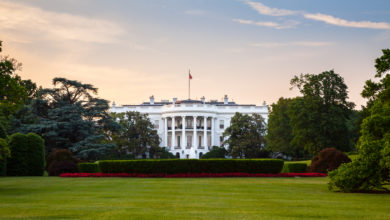
US Government Imposes Travel Restrictions On Ugandan Officials Over Anti-LGBTQ Law
The United States (US) government on Friday announced it has imposed travel restrictions on Ugandan officials accused of undermining the…
Read More » -
Uganda
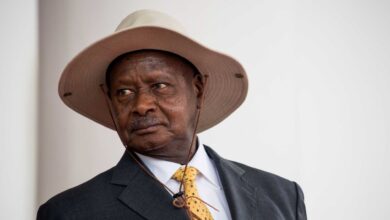
Ugandan President Yoweri Museveni Tests Positive For Covid 19 Virus
Ugandan President Yoweri Museveni has been confirmed to have contracted the Covid-19 virus after one of three tests he conducted…
Read More » -
Uganda
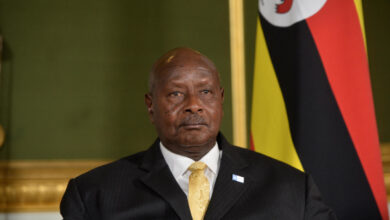
Ugandan President Museveni Signs Passes Law To Stop Stealing Of Human Organs
Ugandan President Yoweri Museveni on Tuesday signed a bill into law that legalizes human organ transplants, reported Reuters. The move…
Read More » -
Uganda

Ugandan President Yoweri Museveni Signs Controversial Anti-LGBTQ Bill
Ugandan President Yoweri Museveni has finally signed the controversial anti-homosexuality bill that calls for harsher penalties for LGBTQ people, including…
Read More » -
Uganda

Ugandan Parliament Passes Revised Version Of Controversial Anti-LGBTQ Bill
The Ugandan parliament on Tuesday passed a revised version of the controversial anti-LGBTQ bill after President Yoweri Museveni asked that…
Read More » -
Uganda

Ugandan President Calls On Lawmakers To Reconsider Anti-Gay Legislation
Ugandan President Yoweri Museveni on Wednesday called on legislators to reconsider the anti-gay legislation passed by parliament last month, reported…
Read More » -
Uganda

Ugandan President Yoweri Museveni Refuses To Sign Anti-LGBTQ Bill Into Law
Ugandan President Yoweri Museveni on Thursday refused to sign the controversial anti-LGBTQ bill into law, requesting that it should be…
Read More » -
Uganda

Ugandan Government Flags Off 5000 soldiers to Trouble-Hit Eastern DR Congo
The Ugandan government on Wednesday sent a contingent of one thousand troops to the troubled eastern part of the Democratic…
Read More » -
Uganda

Uganda’s Parliament Passes New Law Criminalizing Identifying As LGBTQ
Uganda’s parliament on Tuesday passed a bill that will criminalize people who get identified as gay, or a sexual minority…
Read More » -
Uganda

Ugandan Lawmakers Present Anti-Gay Bill In Parliament With Tough New Penalties
Ugandan lawmakers on Thursday introduced a bill in the Parliament that proposes harsh new penalties for same-sex relations in the…
Read More » -
Uganda

Ugandan Government Decides Not To Renew Mandate Of UN Rights Office
The Ugandan government on Wednesday said it has decided not to renew the mandate of the United Nations human rights…
Read More » -
Uganda

Ugandan Government Declares End Of Four-Month-Long Ebola Outbreak
The Ugandan government on Wednesday declared the end of a nearly four-month Ebola outbreak after no new cases had been…
Read More » -
Uganda

Africa CDC Says Ebola Outbreak In Uganda Is Finally Coming Under Control
Africa CDC, which is Africa’s top public health body, on Thursday said that the Ebola outbreak in Uganda is finally…
Read More » -
Uganda

Ugandan Government Receives Over 4,000 Doses Of Ebola Vaccines For Clinical Trial
The Ugandan government on Thursday received a bath of more than 4,000 doses of Ebola vaccines for a clinical trial…
Read More » -
Uganda

Ugandan Government Announces Lifting Of Lockdown Ebola Epicenter Districts
The Ugandan government on Saturday announced lifting of a two-month long lockdown on two districts at the epicenter of the…
Read More » -
Uganda
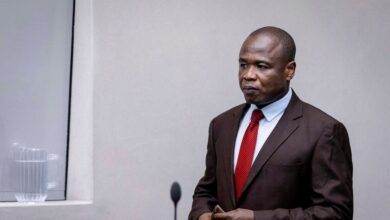
ICC Confirms Conviction Of Ugandan LRA Rebel Group’s Chief Dominic Ongwen
The International Criminal Court (ICC) appeals judges on Thursday confirmed the conviction of Dominic Ongwen, a former commander of the…
Read More » -
Uganda

Ugandan Health Ministry Confirms Last Ebola Patient Discharged From Hospital
A Ugandan health official on Friday said that the country’s last known Ebola patient has been discharged from hospital, raising…
Read More » -
Uganda

Ugandan President Extends Ebola Lockdown In Kassanda & Mubende Districts
Ugandan President Yoweri Museveni has decided to extend the Ebola lockdown in Kassanda and Mubende districts for the next 21…
Read More » -
Democratic Republic of the Congo
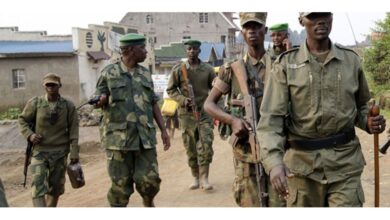
Ugandan Army To Send 1,000 Military Troops To DR Congo By End Of November
The Ugandan army on Monday said the government has decided to send 1,000 military troops to the Democratic Republic of…
Read More » -
Health
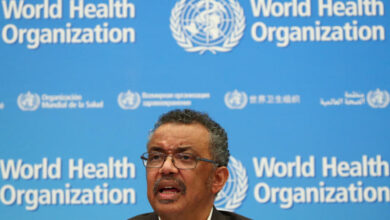
WHO Chief Tedros: First Doses Of Trial Ebola Vaccine To Reach Uganda Next Week
The World Health Organization (WHO) chief Tedros Adhanom Ghebreyesus on Wednesday said the first doses of a new trial vaccine…
Read More » -
Uganda
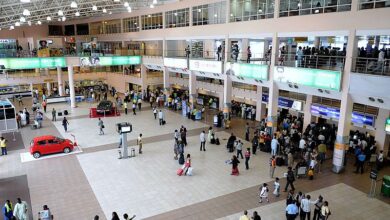
Ugandan President Urges Foreigners Not To Cancel Travel Plans On Ebola Fears
Ugandan President Yoweri Museveni on Tuesday gave an assurance to foreign visitors that the Ebola outbreak in the country was…
Read More » -
Uganda

Ugandan Health Ministry Confirms Spread Of Ebola In Country’s Eastern City Of Jinja
Ugandan health ministry on Sunday said a confirmed Ebola case had been reported from the country’s eastern city of Jinja,…
Read More » -
Uganda
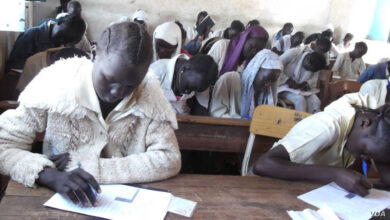
Ugandan Government Shortens School Term By Two Weeks To Control Ebola Outbreak
Ugandan Education Minister Janet Museveni on Tuesday announced the government has decided to shorten the school term by two weeks…
Read More » -
Uganda

Ugandan President Museveni Assures No Ebola Lockdown Amid Rising Cases
Ugandan President Yoweri Museveni on Friday reiterated that there won’t be any lockdown in the country to stop the spread…
Read More » -
Uganda

WHO Urges Neighboring Countries To Prepare As Ebola Spreads in Uganda’s Kampala
The World Health Organization (WHO) on Wednesday called on neighboring countries to boost their preparedness against Ebola as the deadly…
Read More »

